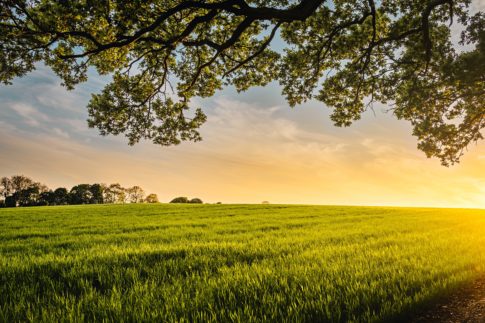
The Impact Farms Have on Our Health and Environment
The greatest assets we are able to pull from the earth provide sustenance for ourselves. We don’t simply rely on the earth as a big hurtling rock to stand upon, we need it for the very resources that keep us alive. This is why, as we move forward into an uncertain future in which climate change is a growing concern, we must practice more sustainable farming techniques.
Farms take up a lot of land and demand a lot from the soil used, and the sheer amount of food that a commercial farm has to grow can be damaging to the naturally occurring minerals in the soil that help food to grow in a healthy way. In order to be able to farm for a greater amount of time looking at the long-term future, more farms will need to build sustainable infrastructure.
Essentially, without a healthy planet, we can’t eat as healthy as our bodies need — fresh veggies and fruits need to be harvested from good soil. Safe meat sources need good space and regulated practices to ensure no disease or issues in distribution. All of this amounts to a big demand on the earth, that without better farming practices in place, the earth won’t be able to keep up with.
Sustainable Structures Can Help
Many farms and ranches need a barn for livestock and equipment, so many farmers consider building one. There are sustainable practices to consider when building a barn, ranging from the materials used, to the very size of the structure itself. Every part of a building can contribute to a more sustainable imprint for the farm.
For example, when building your barn, you should consider the source of the materials you will be using. Importing timber from far away may be cheaper for the cost of the materials themselves, but the carbon footprint left behind from shipping items halfway across the world is incredibly high. Locally sourcing materials may be slightly more expensive initially, but you’ll be supporting your local economy while reducing the carbon footprint of your farm.
You’ll also want to consider the size of your barn as a sustainability issue. You may want a big barn because bigger is better, but consider how much space you actually need before laying out plans. The bigger the barn, the more energy and resources needed to keep it lit, warm, and running.
Advanced Technology Makes More Sustainable Practices Possible
Genetically Modified Organisms (GMOs) in the food world tend to be fairly controversial. Created through a process of Recombinant DNA Technology, according to WGU, “The genetically modified products are able to perform better than the regular medicine or produce. Recombinant agriculture is able to be more pest resistant or weather resistant, recombinant medicine like insulin is able to better work with bodies, etc. Because of the many benefits that recombinant DNA holds for a variety of products, researchers are optimistic about the future it has within biosciences, and in other industries as well.”
This field of medical biotechnology is relatively new and the studies determining whether or not their practices are safe for regular consumption have yet to be conclusive, and in some cases, connections to cancer have been drawn. However, in the world of farming, GMOs can be helpful in both meeting production demand and not requiring as many resources to meet that demand.
GMO crops can be engineered to grow in new parts of the world where agriculture previously wasn’t sustainable because of harsh conditions. This helps reduce the strain on the initial 10 percent of the earth where most agriculture was occurring, and the less strain on the same patches of earth, the better. It also means that local economies can see the benefit of bringing the agriculture industry to their hometown or village.
What the industry needs to move away from, however, are things like concentrated animal feeding operations (CAFOs). Not only are these operations unhealthy for the livestock that they aim to produce — a health risk that is then passed on to the consumer — but the carbon footprint is much larger than it needs to be. Moving to more sustainable livestock practices is crucial for a shift in sustainable agriculture.
A Better Earth That Provides For Us
Part of investing in more sustainable practices is investing in a greater longevity for the planet. In order to continue in a healthy way for both the earth and our race, we have to have better practices in place that make this possible. The agriculture industry understands that they’re working with finite resources and wants to ensure the best use of what they have going forward.
Many farmers have legacy knowledge of the environment they farm in, passed down through generations of farming families. This helps them to understand the changes they see happen in their crops and in the land each year and to better incorporate practices that will make their farming more sustainable. Unfortunately, a demand for more sustainable agriculture is frequently a cost pushed onto the farmer — and many can’t afford the switch.
Government agencies could help to offset these costs, as could commercial produce and livestock producers. It isn’t simply on the farmer to create better infrastructure for the industry — it’s on everyone. By reducing the demands we make of the earth, we can ensure a better home for us for many years to come.






